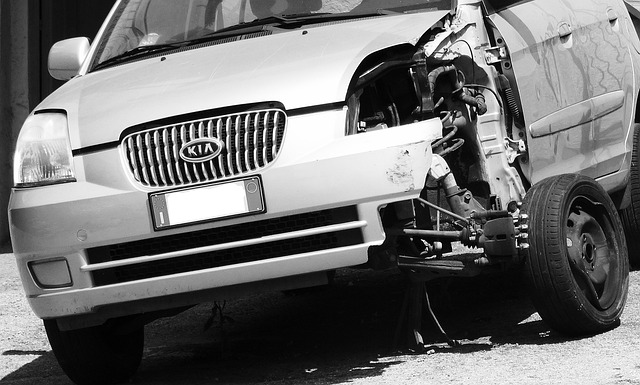
An SR-22 requirement might land in your lap unexpectedly, leaving you feeling frustrated and uncertain. But fear not! An SR-22 isn’t a punishment; it’s actually a positive step on the road to regaining your driving privileges and becoming a more responsible driver. In this article, Cheap Insurance will clear up any confusion you might have about SR-22s and show you why it’s an opportunity for a fresh start.
Key Takeaways:
- An SR-22 is NOT a punishment: It’s a way to demonstrate financial responsibility and regain driving privileges.
- SR-22 requirements vary by state: Check your state’s DMV website for specifics on duration and reasons.
- The SR-22 helps you get back on track: It allows you to drive legally and rebuild your driving record.
- Safe driving habits are key: Avoid violations, maintain continuous insurance, and consider defensive driving courses.
- Lower car insurance rates are possible: By fulfilling the SR-22 requirement and demonstrating responsible driving, you could qualify for better insurance deals in the future.
What Exactly is an SR-22?
An SR-22, formally known as a Certificate of Financial Responsibility, is a document filed electronically by your auto insurance company with your state’s Department of Motor Vehicles (DMV). It serves as proof that you maintain the minimum required auto liability insurance coverage. While it’s not an actual car insurance policy itself, it acts as an endorsement attached to your existing policy.
An SR-22 doesn’t increase your insurance coverage; it simply verifies you meet the minimum requirements to drive legally.
Why Might I Need an SR-22?
Several situations can trigger an SR-22 requirement, typically related to demonstrating financial responsibility after a driving violation. Here are some common reasons:
- DUI/DWI Convictions: A DUI/DWI (Driving Under the Influence/Driving While Intoxicated) conviction often results in an SR-22 requirement along with license suspension. The length of the SR-22 requirement varies by state but typically lasts for several years after your license reinstatement.
- Multiple Traffic Violations: Accumulating multiple traffic violations within a short period, such as speeding tickets or reckless driving citations, can lead to an SR-22 requirement by your state.
- Driving Without Insurance: Being caught driving without car insurance can result in license suspension and an SR-22 requirement to reinstate your driving privileges.
- Unpaid Traffic Tickets: In some states, neglecting to pay traffic tickets can lead to license suspension and an SR-22 requirement for reinstatement.
Remember: Specific SR-22 requirements vary by state. Consult your state’s Department of Motor Vehicles website for details on SR-22 requirements in your area.

How Long Do I Need to Keep an SR-22?
The duration of an SR-22 requirement depends on the reason you need it and the regulations of your state. Here’s a general breakdown:
- DUI/DWI Convictions: The SR-22 requirement typically lasts for 3-5 years after your license reinstatement, though it can be longer in some states.
- Other Violations: For violations like multiple traffic tickets or driving without insurance, the SR-22 requirement might be shorter, ranging from 1-3 years.
It’s crucial to fulfill the entire SR-22 requirement mandated by your state. Failing to do so could result in license suspension again. Contact your state’s DMV if you’re unsure about the duration of your SR-22 requirement.
The Silver Lining: How an SR-22 Can Help You in the Long Run
While an SR-22 might seem like a hassle initially, it can actually benefit you in the long run. Here’s why:
- Restored Driving Privileges: An SR-22 allows you to regain your driving privileges after a suspension, enabling you to get back on the road legally.
- Maintaining Responsibility: Maintaining the minimum required insurance coverage with an SR-22 demonstrates financial responsibility and a commitment to safe driving.
- Lower Rates in the Future: By consistently maintaining insurance coverage and avoiding further violations during the SR-22 period, you can potentially qualify for lower insurance rates in the future.
Think of the SR-22 as an opportunity to demonstrate your commitment to responsible driving. By fulfilling the requirement and practicing safe driving habits, you can rebuild your driving record and potentially enjoy lower insurance costs down the road.

Beyond the SR-22: Steps to Improve Your Driving Record
While the SR-22 helps you regain driving privileges, it’s just the first step. Here are some proactive measures you can take to improve your driving record and become a safer driver:
- Defensive Driving Courses: Consider enrolling in a defensive driving course. These courses can refresh your knowledge of traffic laws, teach you defensive driving techniques, and potentially lead to a discount on your car insurance.
- Practice Safe Driving Habits: Always buckle up, avoid distractions like texting or using your phone while driving, and obey speed limits and traffic laws
- Maintain a Clean Driving Record: Once you’ve fulfilled the SR-22 requirement, strive to maintain a clean driving record by avoiding any further traffic violations. This demonstrates a commitment to safe driving habits and can significantly improve your insurance rates.
- Compare Quotes For Cheap Car Insurance: After the SR-22 requirement is lifted, it’s wise to shop around for car insurance quotes. Maintaining continuous insurance coverage throughout the SR-22 period and beyond shows responsibility, and you might be surprised by potentially lower rates from other insurance providers.
- Consider Usage-Based Insurance: Telematics-based car insurance, also known as usage-based insurance (UBI), is gaining popularity. UBI programs track your driving habits (such as mileage, time of day, braking frequency) and offer discounts for safe driving. If you’ve demonstrably improved your driving habits after the SR-22 requirement, UBI could be a cost-effective option.
Every state has its own regulations regarding SR-22s and driving record improvement. Always consult your state’s Department of Motor Vehicles website for the most up-to-date information and resources specific to your situation.
An SR22 requirement might seem like a burden at first, but it’s an opportunity for a fresh start. By fulfilling the requirement, practicing safe driving habits, and taking proactive steps to improve your driving record, you can regain your driving privileges, potentially lower your insurance costs, and become a more responsible driver on the road.


